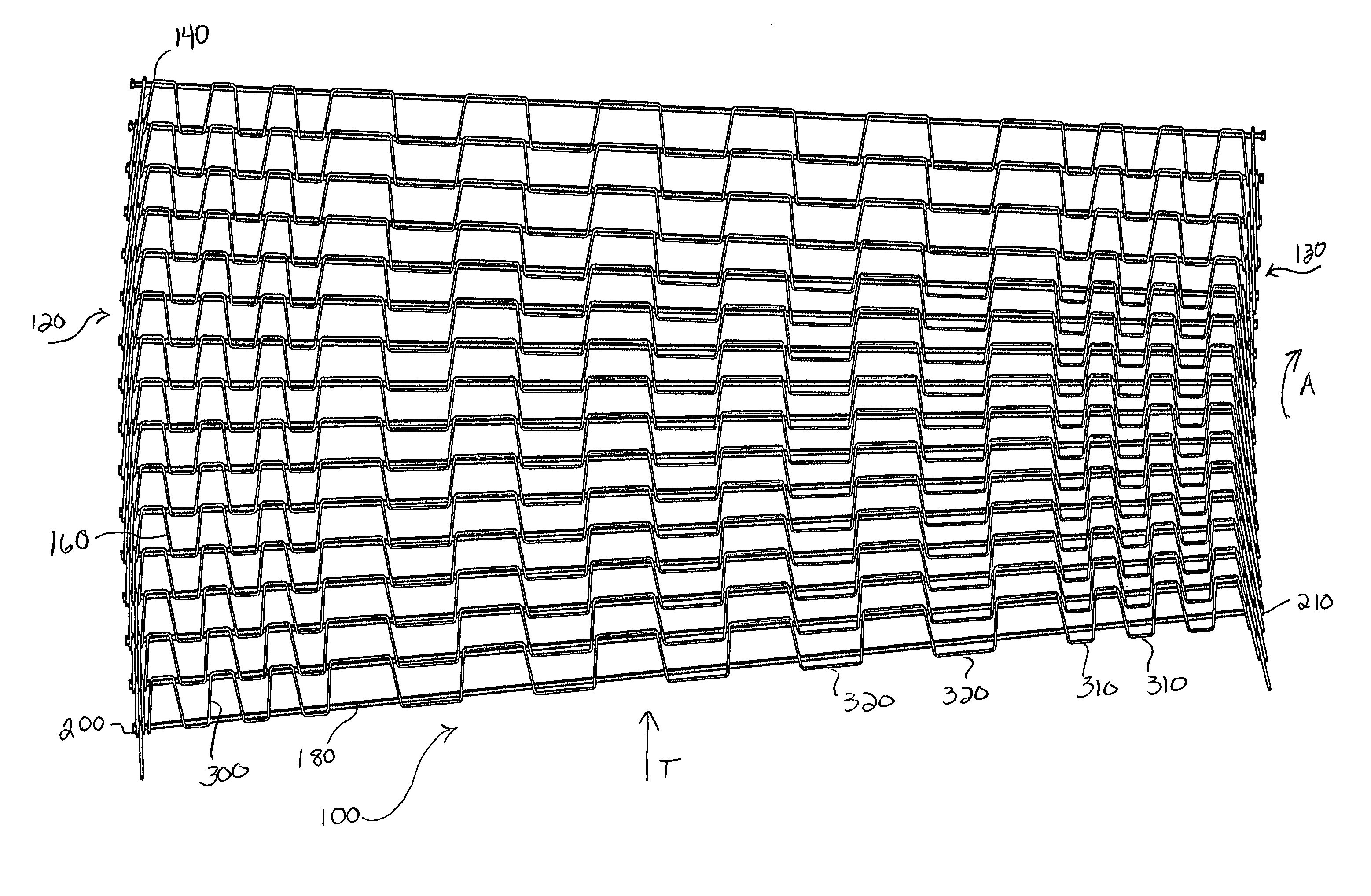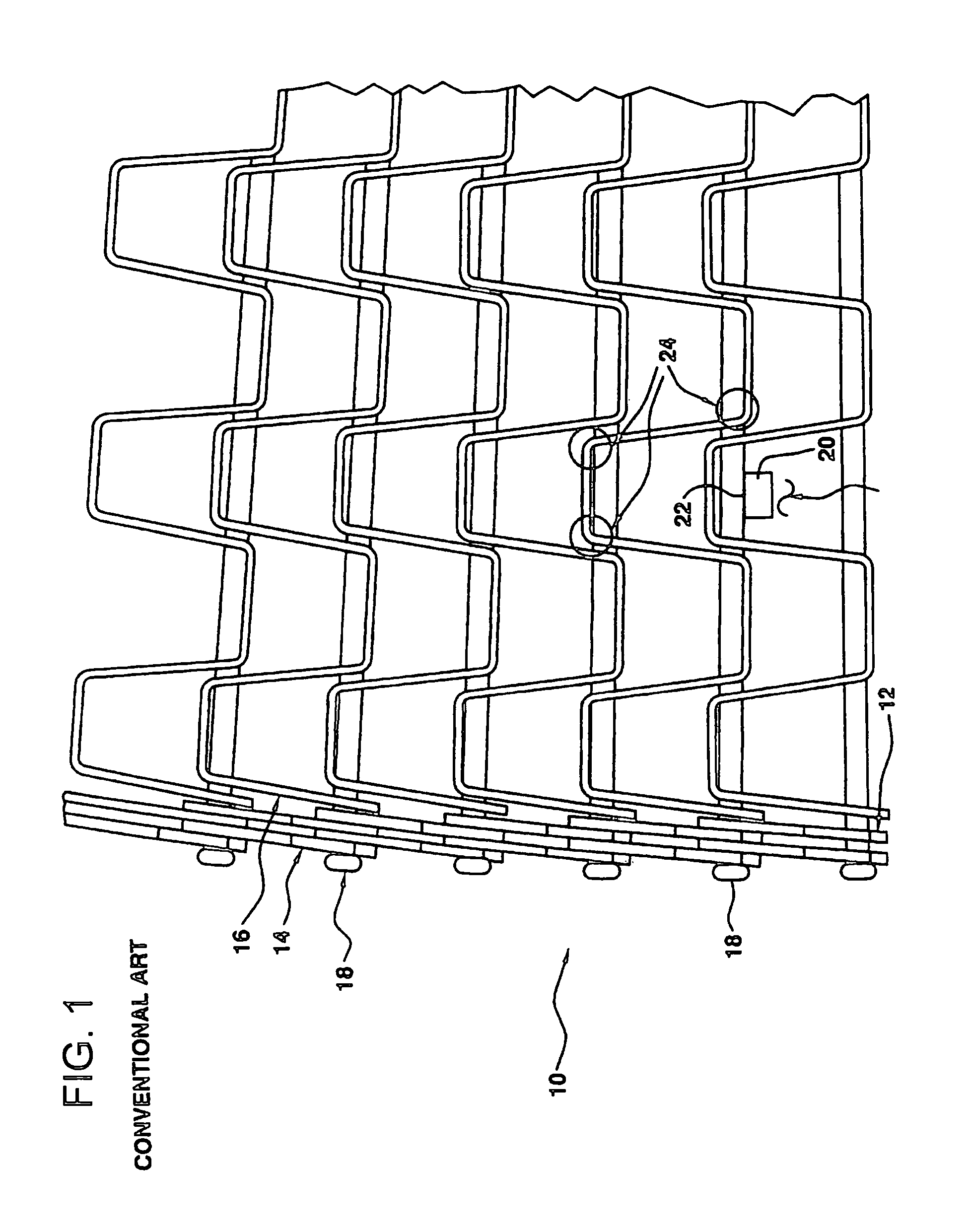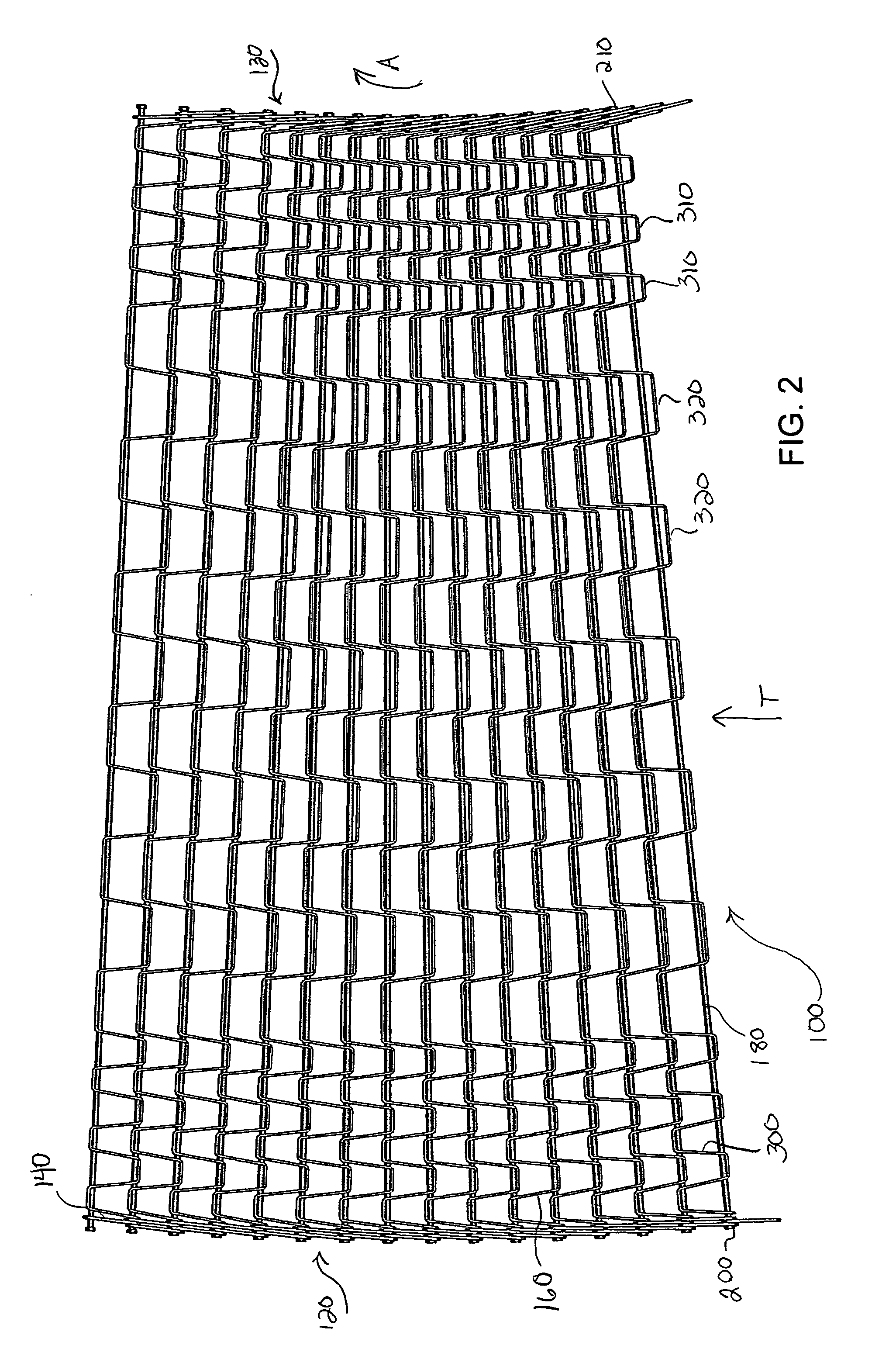Variable spaced conveyor belt
a conveyor belt and variable space technology, applied in the field of conveyor belts, can solve the problems of reducing the overall cost of manufacturing the conveyor belt, and reducing the overall cost of manufacturing the belt, so as to achieve the effect of withstanding the tension applied and without fatigu
- Summary
- Abstract
- Description
- Claims
- Application Information
AI Technical Summary
Benefits of technology
Problems solved by technology
Method used
Image
Examples
Embodiment Construction
[0016]A conveyor belt in accordance with the present invention is shown generally in FIG. 2 by reference numeral 100. Conveyor belt 100 preferably comprises a flat wire conveyor belt including a plurality of spaced tractive rods 180 disposed in succession and transversely with respect to a direction of travel T as represented by arrow T of belt 100, each rod 180 having two ends 200 and 210.
[0017]Belt 100 has a transport course preferably including at least one course turn deviating in a direction selected from the group consisting of a left course turn and a right course turn. When belt 100 is in a right course turn as represented by arrow A, belt 100 has an outside edge 120 and an inside edge 130. Belt 100 also has a straight transport course, also exemplified by arrow T, which is generally downstream of a left or right course turn of belt 100.
[0018]Belt 100 includes a plurality of rows of wickets 160 transversely disposed with respect to the direction of travel T, and interconnect...
PUM
 Login to View More
Login to View More Abstract
Description
Claims
Application Information
 Login to View More
Login to View More - R&D
- Intellectual Property
- Life Sciences
- Materials
- Tech Scout
- Unparalleled Data Quality
- Higher Quality Content
- 60% Fewer Hallucinations
Browse by: Latest US Patents, China's latest patents, Technical Efficacy Thesaurus, Application Domain, Technology Topic, Popular Technical Reports.
© 2025 PatSnap. All rights reserved.Legal|Privacy policy|Modern Slavery Act Transparency Statement|Sitemap|About US| Contact US: help@patsnap.com



